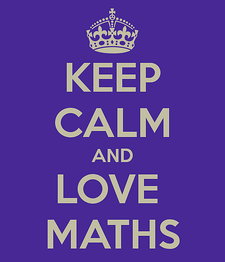America Desperately Needs More STEM Students
Here is some interesting information on the future of STEM learning I found in a cool graphic illustration by First Book, a nonprofit social enterprise, that seems to indicate this country is heading for trouble in a few years, trouble brought about by our losing our edge as the world’s most technologically advanced nation.
It is expected that By 2018 there will be at least 8 million jobs in the US dependent on skills learned in STEM learning courses. Problem is, experts estimate that at least 3 million of those jobs will have to go to applicants from outside the US due to a shortage of qualified people here. Worse, the companies needing those workers might take the jobs elsewhere.
Why don’t we have enough qualified applicants in this country to supply our own employment need? We certainly have enough kids in school. In fact, each year over 1 million freshman high school students claim to be interested in a career requiring STEM skills. Unfortunately 60%--six out of ten--change their minds before graduation.
- 0 Comments
- Dec 17, 2013 2:24:13 AM
- Posted by Mike Nardine
- Topics: Math, STEM, Education, Education Politics, Student Engagement
NYC bets on the future by reinforcing STEM focus programs
New York, like many cities large and small in this country, wants to build its own answer to Silicon Valley. Unlike many other cities, New York has really leaned into this initiative.
New York persuaded Facebook and Google to open offices in the city. It worked with local business partners to set up high-tech incubation centers to attract new tech jobs. New York also put lots of money where its mouth is by looking to create a new high-tech institution of higher learning and opening several STEM programs in the city's five boroughs.
In 2011 former mayor Michael Bloomberg, convinced that the city’s once dominant financial sector was too volatile to be a dependable economic engine for the city, pushed the city fathers to ante up free land and $100 million in taxpayer funds to a university or a group of universities willing to build a first-rate engineering or tech campus within the five boroughs. The press came to call this his "genius school" initiative. Several big name universities in the science field including the Massachusetts Institute of Technology and Sanford University entered into what amounted to a competition for the honor of being the "genius school". Cornell University in upstate New York won the competition.
- 0 Comments
- Dec 13, 2013 12:03:19 AM
- Posted by Mike Nardine
- Topics: Local News, STEM, Education, Education Politics, School, Middle School
Why using arts to encourage more STEM learning
Is it really all that important that the "A" in Art education find its way into STEM learning and make STEAM? You bet! And as always there is a movement to do exactly that. I say "as always" because concerned individuals throughout history have attempted to merge the arts and the sciences.
- 0 Comments
- Dec 11, 2013 9:47:00 PM
- Posted by Mike Nardine
- Topics: STEM, Education, Student Engagement
Gamification STEM learning
Gamification, for those of you too busy earning a living and raising a family to keep up with the new words added almost daily to the popular tech lexicon, is a term first used by Nick Pelling a British computer programer in 2010. According to Wikipedia the term has come to mean "the use of game thinking and game mechanics in non-game contexts to engage users in solving problems".
So what does that mean in the context of STEM learning?
- 0 Comments
- Dec 10, 2013 10:21:00 AM
- Posted by Mike Nardine
- Topics: Math, EdTech, STEM, Education, Student Engagement
Report Discusses Teaching with Technology - In Which Percentile Are You?
It should come as no surprise that the results of a recent Pew Research poll of middle and secondary teachers across the United States showed that the use of digital technology has become an integral part of their teaching method.
Fully 92% of polled teachers admit the Internet has had a major impact on how they access classroom material. Almost half report using an e-reader or tablet to complete classroom assignments.
Perhaps more surprising is the number of educators willing to allow students to do research in the classroom with the cellphone. Apparently undaunted by fears of cell phone interruption or distracted students (or maybe just trying to make a virtue of necessity), 52% of teachers in upper and middle-class districts and 35% of teachers with lower income kids let them work on their assignments with smartphones.
- 0 Comments
- Dec 4, 2013 8:00:00 PM
- Posted by Mike Nardine
- Topics: EdTech, Education
Applying Math curriculum to real life using Google SketchUp
Math in practical use as opposed to being practically useless.
That’s the approach taken by more and more math teachers.
Of course math was always useful in the real world; the trick was convincing your students that that was the case.
Hard to do when the curriculum and available tools limited teachers to books and the blackboard...Oh, and let us not forget transparent plastic protractors for drawing straight lines on paper...at least that’s what most of us used them for.
The only angle we thought about was a guy’s agenda as in “What’s his angle?,” not “the space (usually measured in degrees) between two intersecting lines or surfaces at or close to the point where they meet.”
What’s happened to change all that? Technology!
Technology has made all the difference in turning math class into a learning experience as practical as woodworking or auto repair.
And that's what eighth-graders and their teachers discovered at Upper DuPont Area Middle School in Loyalton, Pa. while undertaking the redesigning and landscaping of the schools courtyard.
- 0 Comments
- Dec 2, 2013 10:55:00 PM
- Posted by Anna Sandler
- Topics: Math, Local News, EdTech, Education, School, Student Engagement
What Is Wrong With American Education?
As with everything else the question is best answered by "it depends!" In this case it depends on who you ask.

Ask many reformers and they’ll assure you there is plenty wrong as shown by the poor showing American students make on international standardized tests. We can not completely ignore that.
But ask Scot Osterweil, a professor at the MIT Media Lab, and he will tell you that he believes educators need to worry less about standardized tests and work harder toward inspiring students' natural creativity.
- 0 Comments
- Nov 18, 2013 12:21:00 PM
- Posted by Charles Nimrad
- Topics: STEM, Education, Student Engagement
Why kids take on adult math anxiety

Of course the answer to the question posed by the title of this article is simple: Adults!
Adults instill in children their own feelings about certain learning disciplines like math and science.
Studies show that children tend to follow the lead of the same-sex parent where learning is concerned. Mothers discouraging daughters, fathers discouraging sons.
But both are guilty of perpetuating harmful stereotypes with comments like "girls are usually better readers", or "boys do better at math!"
Teachers, in spite of their training are often guilty of the same mistakes when working with kids.
- 0 Comments
- Nov 15, 2013 11:50:00 AM
- Posted by Mike Nardine
- Topics: Math, EdTech, Education, Student Engagement
Can You Teach Students To Love Math?
 Most math teachers say they love math. And the best ones make a determined effort to inculcate their students with that same sense of the divine. How often do they succeed in this? We all know the answer is “not very often.”
Most math teachers say they love math. And the best ones make a determined effort to inculcate their students with that same sense of the divine. How often do they succeed in this? We all know the answer is “not very often.”
And why not? Well for one thing as math professor Manil Siri recently said, “Math gets a bad rap.” Before we get to school our parents have already told us about math--and what they’ve told us about it wasn’t good. Math’s hard, it isn’t very useful in real life; and besides, you need a special mental aptitude for it to be successful. For another, even those teachers otherwise capable of making students fall in love with math are limited by their curriculum; or as high school math teacher Dan Meyer complains, to simply “memorizing procedures and performing them accurately and quickly.” A method requiring lots of boring homework far from that inspiring, charismatic teacher.
Do students need to fall in love with math to be good at it? Well, it certainly makes a teacher’s life easier if the students are enjoying what they are doing. This is true of every discipline from language to physics. But in the absence of ‘Love!’ most teachers would settle for students simply realizing how beautifully an understanding of math can help them interact with the real world.
- 0 Comments
- Oct 31, 2013 5:45:00 PM
- Posted by Charles Nimrad
- Topics: Math, STEM, Education
How do you get students from the worst school systems in the US to and through college
Now I know why LAS VEGAS says “What happens in Vegas, stays in Vegas.” The city isn’t really bragging, it is just embarrassed. There are probably a lot of reasons for that embarrassment, but here are the two I just discovered after watching this video:
First, they have some of the worst public schools in the entire country.
Second, some of those poor Las Vegas schools have no computers.
- 0 Comments
- Oct 25, 2013 2:13:00 PM
- Posted by Mike Nardine
- Topics: Local News, EdTech, Education, Computer Science
Relevant Posts
Popular Posts
Subscribe to Email Updates
-
I Want To Learn MoreADDITIONAL INFORMATION


